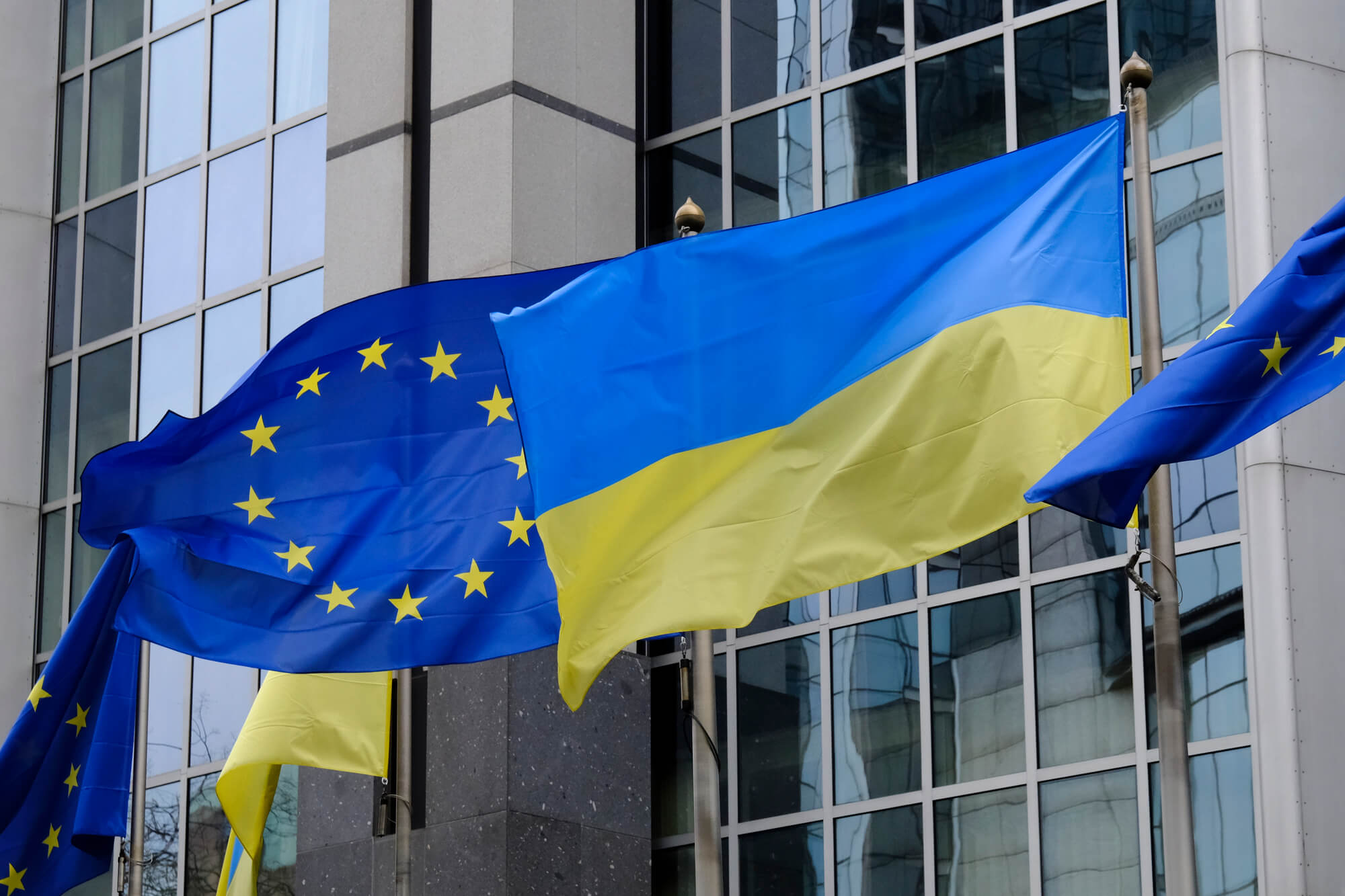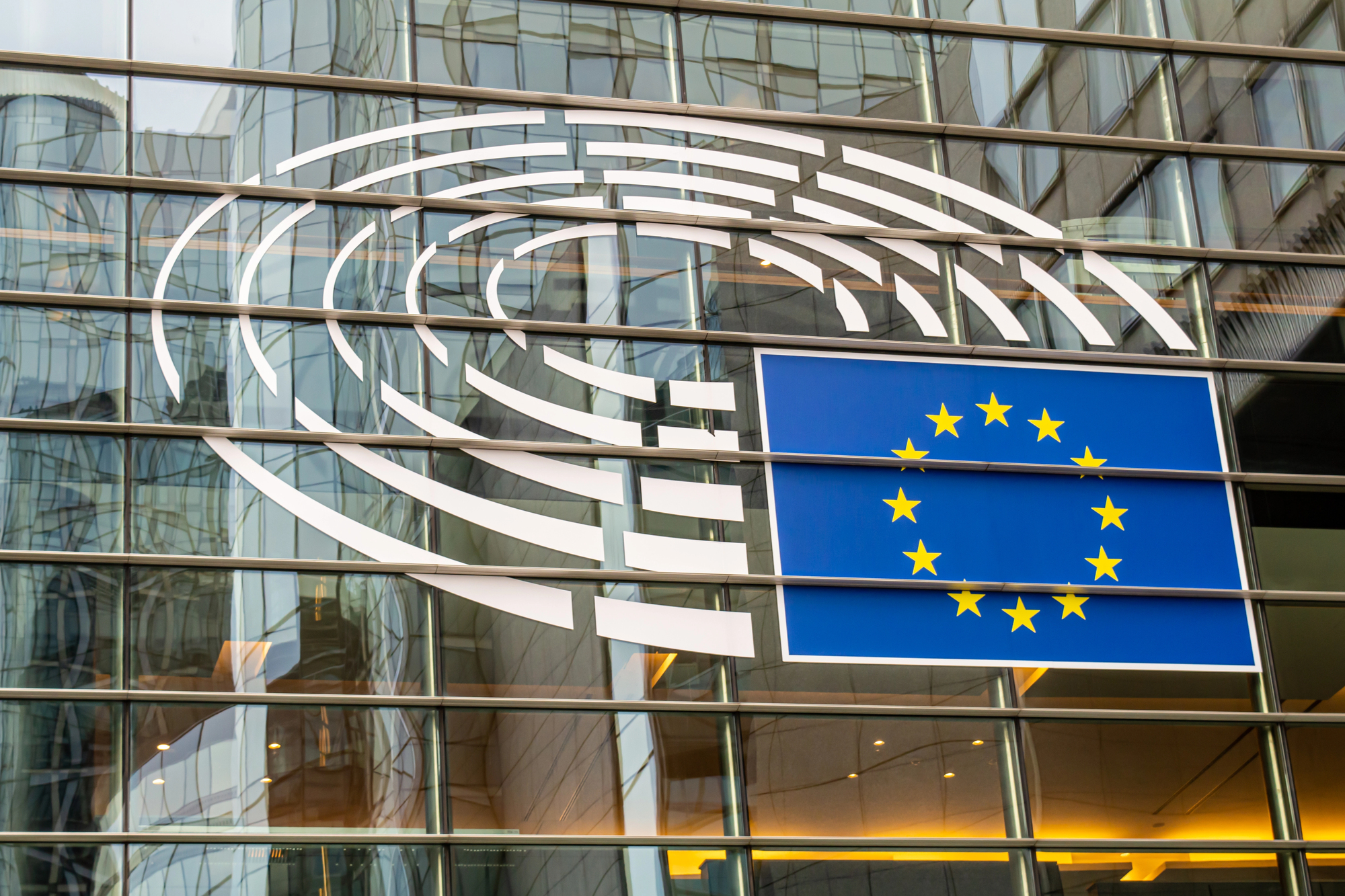This article is short version of paper Corruption Pipeline: The Threat of Nord Stream 2 to EU Security and Democracy. Which one is a continuation of publications on the Kremlin’s subversive activity in Europe prepared by Free Russia Foundation. The first paper, The Kremlin’s Gas Games in Europe, looked at Gazprom’s overall current tactics in Europe, including its pipeline plans, energy propaganda, and other policies.[1] However, after our presentations in the US and Europe earlier this year,[2] we realized that a separate paper specifically focused on certain aspects of Nord Stream 2 was required.
Gazprom and its Western partners that are slated to benefit from Nord Stream 2 are aggressively advancing the pipeline as a purely commercial project that will only bring benefits to Europe. The reality is that the Kremlin is the main driver and financial backer of this pipeline plan of Gazprom, Russia’s biggest monopoly, which has a long history of corruption and being used as a political tool in Europe.
This paper also argues that in Russia the project, as was the case with Nord Stream 1, will primarily benefit President Vladimir Putin’s cronies and not the Russian budget or regular consumers. In Europe, as we have shown in The Kremlin’s Gas Games in Europe, the project will result in “divide and rule” political and security outcomes in which German and other big energy corporate interests will override the interests of several Eastern European countries, undermining emerging EU energy principles and the existing transatlantic security architecture. This Moscow-led pipeline seemingly being served as a free and lucrative gift to European energy corporations in reality comes at the expense of taxpayers and the reasonable long-term development of gas resources in Russia. Nord Stream 1 and 2 have already started bringing the Kremlin’s business practices and political cooptation to Europe, and they will further undermine EU aspirations for better governance, democratic institutions and security.
To understand why this development is accepted in Germany, and meets with weak and confused resistance in the EU, it is important to look at the roots of the friendship between big Western energy companies and Soviet and post-Soviet gas producers. This paper also demonstrates that, apart from Gazprom’s direct partners, there is a group of Western enablers – lobbyists, public relations firms, co-opted dignitaries, and analysts – who help the Kremlin advance the discourse around Nord Stream 2 in ways that are complementary to Putin’s agenda. Some of the propaganda themes employed by these groups date from the Cold War era while others are brand new.
This paper concludes with policy recommendations for the European politicians and regulators who are negotiating Nord Stream 2 as well as for civil society activists dealing with the energy propaganda of Gazprom and its enablers in Europe.
Actual results of Nord Stream 1
Officially, Nord Stream 1 was driven first by the need to create greater and more secure supplies of gas to Europe. Additionally, European gas companies hoped to get further deals with Russia and vice versa. Putin seems to have believed that the underwater pipeline to Germany would create more lucrative opportunities than an overland one. Gazprom had been offered another, cheaper option to build a pipeline via Belarus in 2001, but refused it and never seriously considered it again.[3] In 2013, Putin asked Gazprom to look again into expansion of the Yamal-Europe route via Belarus[4] but so far this idea has not become the monopoly’s priority.
A Russia-Europe Energy Dialogue was convened with the aim of guaranteeing long-term supply and demand through mutually binding contracts and assets swaps.[5] Furthermore, the new pipeline was meant to make Russia an important intermediary between Europe and Central Asia. While Gazprom never wanted to allow Central Asian producers to send their gas to Europe, it did want to use the gas from this region to fulfill a large part of its obligations inside Russia and to neighbors such as Ukraine, while at the same time increasing delivery of its own gas to more lucrative markets in Europe.
The deal was also meant to save Russia money by cutting transit costs. At that time, in the mid-2000s, about 10-15% of Gazprom’s exports to Europe went through Belarus, and about 70-75% went through Ukraine.[6] Gazprom officials often described the route through Ukraine as costly and unprofitable, but they never substantiated those statements. Vladimir Milov, the former deputy energy minister, points out that Gazprom has never released any comprehensive comparison of transit costs via existing onshore export routes and via new offshore pipelines such as Nord Stream 1.[7]
In practice, Nord Stream 1 has never fulfilled any of its officially stated goals. By the time it became operational (first line in 2011, second line a year later), the public justifications were no longer valid. Although Gazprom continued to use its projections of rising gas demand through 2012, by the end of 2008 it was clear that the economic crisis had rendered them invalid. Since then demand for natural gas in Europe has stagnated; only in the last two years has it started to pick up slightly.[8] EU demand for gas still remains far below the additional 100-200 bcma (on top of the level of demand between 400 and 450 bcma seen in the last few years) that Gazprom officials had projected for 2015-25. Even recently, although predictions about EU gas demand and future import requirements remained volatile and inconclusive in the last few years,[9] Gazprom and its corporate friends have continued to talk about the large demand for Russian gas they expect in 2035.[10]
In the meantime, many of the promised Russian-European deals have not come to fruition. Initially Putin was not completely averse to the idea of an Energy Charter that guaranteed mutual investments, but the Kremlin was reluctant to undermine Gazprom’s midstream monopoly or its ability to determine supplies and price levels to Eastern Europe. Thus the Energy Charter was never properly ratified and a creeping tension between Brussels and Moscow emerged long before the financial crisis of 2008.
The promise of more transit for Central Asian gas has not materialized either. In 2009, right after the start of the financial crisis, Gazprom defaulted on its binding agreement to import 40 bcma of gas from Turkmenistan. It has since kept the intake of Central Asian gas at a low level.
The bottom line is that the legacy of Nord Stream 1 for Nord Stream 2 is negative. Nord Stream 1 is still far from profitable; volumes are uncertain for the next 10-15 years. Gazprom has guaranteed to return the 12 billion euro investment to its European partners, even if the pipeline stops working altogether – a promise that will hurt the Russian budget and gas-sector development even further. Even if Nord Stream 1 pays for its construction at some point in the mid-2020s, it will not bring any more revenues to Gazprom or to the Russian budget because the same volumes of gas are still being transported to the same customers under the same contract but only through a new and more expensive export route, simply in order to avoid Ukraine and Belarus.[11] The only genuine justification for another 55 bcma pipeline is still political: to circumvent Ukraine’s gas transit system altogether and to exclude the country completely from Gazprom’s routes to Europe and Turkey.
Conclusions: implications for Western policy-makers
A test of European law, principles and values
There are long-term moral, political, and strategic implications of Nord Stream 2 for Russia and Europe. Like its predecessor, the project will drain huge resources from Russian taxpayers for many years to come and exacerbate already rampant corruption in Gazprom and beyond. The only certain financial beneficiaries in Russian are Kremlin insiders and Gazprom’s subcontractors. Do European regulators, politicians, and business people want to collude in a project that will direct more money towards corrupt people who are dedicated to the undermining of rule of law in Europe? At a time when faith in the European Union and the integrity of its regulators is at an all-time low, a Nord Stream 2 deal will send a disastrous message. If German industrialists are allowed to take advantage of their special relationship with Russia largely at the expense of the rest of Europe and of the EU as a union, then naturally other national business elites in Europe will also try to advance cozy deals with Gazprom and the Kremlin.
In my view, the Kremlin has not yet taken any decision about what it will do in 2019 or afterwards in terms of cutting off transit via Ukraine. At the moment, the political and economic losses still outweigh the benefits.[12] However, if defying Europe further and escalating conflict become politically expedient and are perceived as economically viable by 2019 or the early 2020s, Russia may try it.[13] If the Kremlin was capable of starting a war in Ukraine, it is capable of shutting Europe off when and if the leadership concludes it has the means and interests to do so. It is correct to predict that with dependence on gas transit through Ukraine gone, Putin is much more likely to reignite full scale aggression against Ukraine.[14]
For these reasons, cooperation with Putin’s Gazprom should not be seen as just another trade decision or case of business as usual. As noted, large mineral extraction corporations and infrastructure companies have argued since Soviet times that bilateral trade with corrupt and authoritarian states will change their political character for the better and bring them closer to liberal market economies. The overwhelming evidence, not only from Russia but also from Caspian states and elsewhere, over the last two decades points to the opposite conclusion: hard currency revenues from hydrocarbon exports do not transform authoritarian countries at all.
Instead, oil and gas revenues allow dictatorships and kleptocracies to take a firmer grip on power, to deploy improved surveillance, to buy more military and police equipment, and to engage in regional wars and domestic oppression. In the Cold War and in the present, the oil and gas trade between Europe and Russia has undermined liberal capitalism and democracy.
Recommendations to Western policy-makers[15]
- If the EU Commission gets a mandate to negotiate a new regulatory framework for Nord Stream 2, provide its decision-makers with detailed information of corruption within Gazprom and full implications of Nord Stream projects for European political institutions, economy, security and democratic values.
- Translate and publicize for the benefit of Western audiences and corporations the findings of investigative journalists and activists in Russia about Gazprom’s corruption and the actual results of Nord Stream 1 for all involved parties.
- Ask Western law-enforcement agencies that are sitting on incriminating information about Putin’s circle and its corrupt operations within Gazprom to act on this and to release comprehensive reports about it.
- Ask relevant government bodies to counter Gazprom’s propaganda about European gas demand and import requirements, market reality, and reasonable outlooks.
Recommendations to Western civil society groups
- Hold partners of Gazprom in Europe – major corporations that are slated to benefit from Nord Stream 1 and 2 – to public account of rampant corruption in the Russian gas industry, and appeal to their self-stated standards on governance and corporate social responsibility values. Make them aware that the “free lunch” offered by Gazprom is at the expense of Russian taxpayers and Europe’s long-term democracy and security
- Facilitate more public events and publications in Europe in which the voice of the regular consumers and the opposition in Russia can be heard with regard to policy-making on Nord Stream 2. Right now, the balance is tilted heavily towards Gazprom’s enablers and sympathizers. Encourage less superficial and more historical, fact-based, and detailed discussion of the problem.
- Insist on measures that will force think tanks and academics in favor of the project to fully disclose their potential conflicts of interest and any affiliation with Gazprom or its partners
About Free Russia Foundation
Free Russia Foundation is a nonprofit, nonpartisan, nongovernment U.S.-based organization with 501 (c) 3 status that informs Western policy makers on events in Russia in real time and supports formulation of an effective and sustainable Russia policy in the U.S. and Europe.
Notes
[1] http://www.atlanticcouncil.org/publications/issue-briefs/the-kremlin-s-gas-games-in-europe-implications-for-policy-makers
[2] http://www.4freerussia.org/conclusions-exposing-security-threats-nord-stream-2-post-soviet-corruption-west/
[3] Mikhail Korchemkin, May 13, 2014, EEGA site, accessed August, 10, 2016.
[4] Denis Lavnikevich, “Газпром готов терять деньги, но не иметь дела с Украиной [Gazprom is ready to lose money but avoid Ukraine]”, BDG, April 15, 2015, accessed September 21, 2016.
[5] Europe wanted to invest in Russian reserves and infrastructure, fearing that Russia could not cope with rising demand over the long term. The Kremlin was happy to provide limited access to select European majors into the Russian energy sector, but in return it wanted access to the gas value-chain in the EU as well as long-term contracts (LTCs) linked to oil. This thinking has been formulated in many Russian sources, including in Stanislav Zhiznin, Energy Diplomacy of Russia (Moscow: East Brook, 2005), pp. 285-324. Zhiznin is head of Center of Energy Diplomacy and Geopolitics, which is close to the Ministry of Foreign Affairs.
[6] In this context, by Europe we mean all Western destinations of Gazprom apart from those in the “near abroad”, thus including non-EU countries in the Balkans as well as Switzerland and Turkey. Ukrainian and Belarusian dominance over exports to the European Union was roughly the same or bigger; however, it makes sense to talk about all Western destinations as they constitute a unitary hard-currency channel in the Kremlin’s view.
[7] In an interview with the author.
[8] In 2016 it grew by around 4% in EU-28 to 447 bcma, compared to 2015. This is not a decisive growth, though, as it comes from a low base, and it is not clear how sustainable this demand growth is in the long-term given the advances in renewable energy and energy efficiency measures in Europe.
[9] For example, in early 2014 Tatyana Mitrova from the Russian Academy of Sciences argued the demand outlook for Russian gas was improving and the European Commission would be open to approving Russian export projects to Europe. Tatyana Mitrova, “Почему у Газпрома не все так плохо, как вам могло показаться [Why Gazprom is doing not as badly as you might have thought]”, Republic, February 20, 2014, accessed November 4, 2016. By late 2014, Mitrova reversed her opinion and produced a pessimistic outlook for growth demand in markets targeted by Gazprom. In 2015 Platts suggested that European gas demand is peaking up above its previous expectations while Jonathan Stern from the Oxford Institute of Energy Studies, a supporter of Gazprom’s views on new pipeline projects, warned about the lack of additional supply and rising EU import requirements. However, Mikhail Krutikhin from Rusenergy argued that Europe is on course to increasing energy efficiency and to reducing imports from Russia by 45 bcma by 2020. Mikhail Krutikhin, “Незваные гости: оправданно ли строительство Турецкого потока [Unwanted guests: is Turkish Stream construction justified?]”, RBC, June 11, 2015, accessed October 3, 2016. He is supported by Italy’s Snam. Thierry Bros, a well-known gas industry expert, argued that European gas demand will struggle to grow and remains uncertain.
[10] Philippe Vedrenne, CEO of Engie Global Markets, argued Europe was likely to need an extra 144 bcma in imports by 2035 as domestic production fell and demand recovered.
[11] Online conference with Mikhail Korchemkin by Lenta, November 14, 2011, accessed August 15, 2016.
[12] Korchemkin argues the US will enforce the Ukraine Freedom Act against Gazprom in case it cuts off Europe in 2019, which will seriously hamper Russia. Mikhail Korchemkin, May 7, 2015, EEGA site, accessed October, 13, 2016.
[13] In fact, as Kristine Berzina from the German Marshall Fund of the United States points out, last year’s incident with Russian naval ships disrupting the laying of the NordBalt electric line in the Baltic Sea may suggest Russia is moving to new aggressive methods in dealing with perceived adversaries in the energy sector, such as Lithuania.
[14] https://www.the-american-interest.com/2017/09/05/gas-attack
[15] More concrete recommendations are offered on pp. 12-14 of our first report.
Main photo: depositphotos.com / fanjianhua
Attention
The author doesn`t work for, consult to, own shares in or receive funding from any company or organization that would benefit from this article, and have no relevant affiliations



